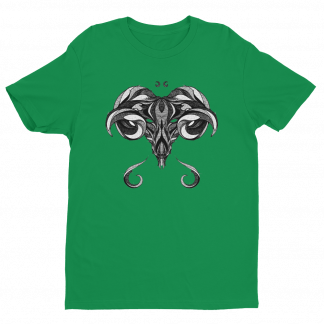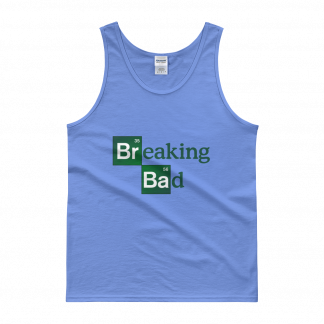Acceptable Content Policy
When utilizing our services or storing content through your user account, you agree that all content will fully comply with our Acceptable Content Policy. It is important to understand when you potentially infringe on the rights of others who may own certain aspects of intellectual property. We will reserve the right to decline or cease the production of any content which is deemed a violation our Acceptable Content Policy.
When considering content you may wish to use with PrintOn.Pro, consult this policy guide to avoid potential infringements. It is important that we respect the rights of intellectual property which may belong to others, while also maintaining artistic freedom for those who create content that falls within the Fair Use Act. Content submitted to PrintOn.Pro will always be subject to review by our team, regardless of past use with PrintOn.Pro or other companies.
Information provided below regarding intellectual property is provided to help you in understanding the existing frame of laws as they may relate to your use of PrintOn.Pro. This is informational content only, and in no event to be considered as legal advice from Printful. For specific advice, you would be best suited to seek proper legal counsel.
Examples of prohibited content
- Names, logos, pictures or other intellectual property of musical groups or musical artists. You also cannot modify the name of, or other intellectual property relating to these individuals and avoid infringement.
- Names, logos, pictures, or other intellectual property of sports teams, colleges/universities, clubs, or organizations. Modifications may not avoid infringement.
- Photos, logos, caricatures, or other artwork depicting actors, actresses, models or other celebrities. Just because you take a photograph of a celebrity does not necessarily give you the right to use that photograph on merchandise, even if you digitally manipulate the photograph. PrintOn.Pro does not allow the use of content depicting celebrities in any manner unless expressly authorized by that person.
- Trademarks, names, or logos of other companies. For example, you cannot use the name of a company or company logo.
This list is not comprehensive. If in doubt, you should consult with an attorney.
What is a Copyright?
Copyright protects original works in many forms (pictures, drawings, graphics, written work, songs and more). A copyright is a bundle of rights, including the exclusive right to do things such as distribute, sell, duplicate, and create derivative works from the original work. Copyright law is meant to protect from others copying, distributing or selling original work without permission.
As a general rule, for works created after Jan. 1, 1978, copyright protection lasts for the life of the author plus an additional 70 years. In general, works created before 1922 are in the public domain. However, if a change has been made to a work taken from the public domain, the new work may be copyrightable and protected. To determine the length of copyright protection for a particular work, consult chapter 3 of the Copyright Act (Title 17 of the United States Code).
You should NOT presume that material is in the public domain without verifying it with an attorney or other reputable source. You should also NOT presume that material publicly available on private or commercial websites is not protected by copyright. Almost all works are protected by copyright, even if they do not have a copyright notice. Therefore, you should assume that you need to obtain permission to use any material that you did not create. Do not copy someone else’s work without first obtaining their permission to do so.
What about Trademarks?
In short, a trademark is someone’s name/brand. The long of it; a trademark is a word, name, symbol or other device that identifies the goods or services of a given person or company and distinguishes them from the goods or services of other persons or companies. Trademark law prevents you from using another’s trademark (such as the name of a musical group or artist) on your merchandise, because such use may cause consumers to believe that the trademark owner has made, approved of, or endorsed your merchandise.
For more information on trademarks visit United States Patent and Trademark Office at http://www.uspto.gov and the federal law on trademarks (U.S.C. Title 15).
What is Right of Publicity?
Because a person’s identity may create a commercial advantage, it is unlawful to use in most content. The “right of publicity” protects aspects of an identity such as; his/her look, voice, name, nickname, and other distinctive characteristics.
What is the Right of Privacy?
Much in the way that an individual has the “right of publicity,” they also reserve the “right of privacy.” An invasion of the “right of privacy” would be public disclosure of private facts, portraying a false light, a misappropriation of a name and/or likeness.
Is it ok to use an image I found on the Internet?
Simply because an image is found on the Internet does not mean that it is in the public domain or available for commercial use on merchandise. You should assume that you cannot use the image unless the author has explicitly granted you a license to use it or it is in the public domain. Further, a person who posts an image on the Internet and claims that you are free to use it may not have had the right to post the image in the first place. Thus, your use of the image may violate the rights of the actual copyright owner.
How does “fair use” work?
“Fair use” is a portion of copyright law that can allow the unauthorized use of another’s original copyrighted work for criticism, commentary, news reporting, teaching, scholarship, and research. In the court of law the term “fair” is determined by four main factors:
- The purpose and character of a use.
- The nature of a copyrighted work.
- The amount and substantiality of the portion of the work used.
- The effect upon the copyright holder’s potential market for the work.
Fair use is applicable in defense of many works, but still has murky aspects that can present difficult scenarios for even expert analysts. Seeking legal counsel with an attorney before using materials that you know to be copyrighted is advised, even if you believe your content to be “fair use.” One way to evaluate whether a use is “fair” is to consider your own reaction if someone used your work without permission.
If in doubt, assume any unlicensed use is not a fair use. Fair use of an image for commercial purposes is treated differently than use for informative purposes or commentary. In general, a claim of fair use of an image on merchandise may not hold up in court, especially if the merchandise is sold for profit.
For more information on copyright visit the United States Copyright Office at http://www.copyright.gov and the federal law on copyrights (U.S.C. Title 17).


